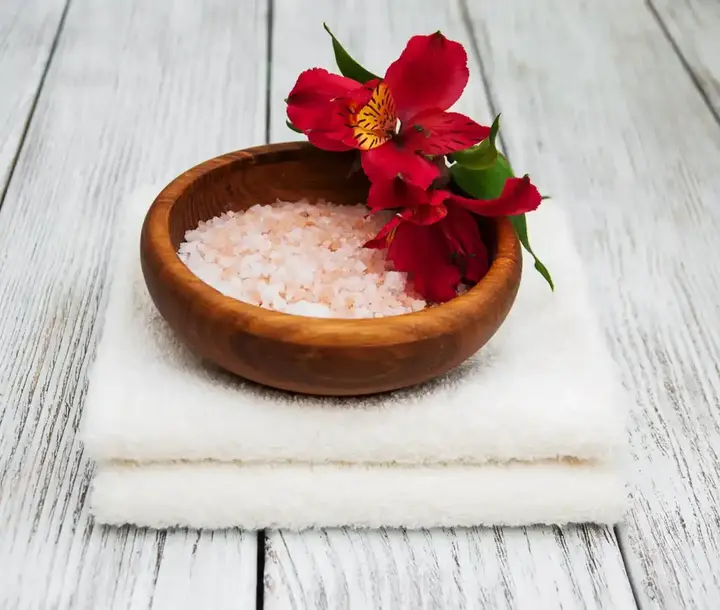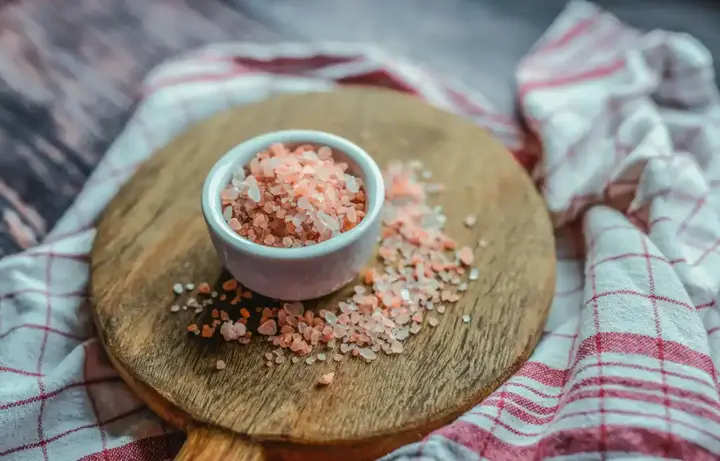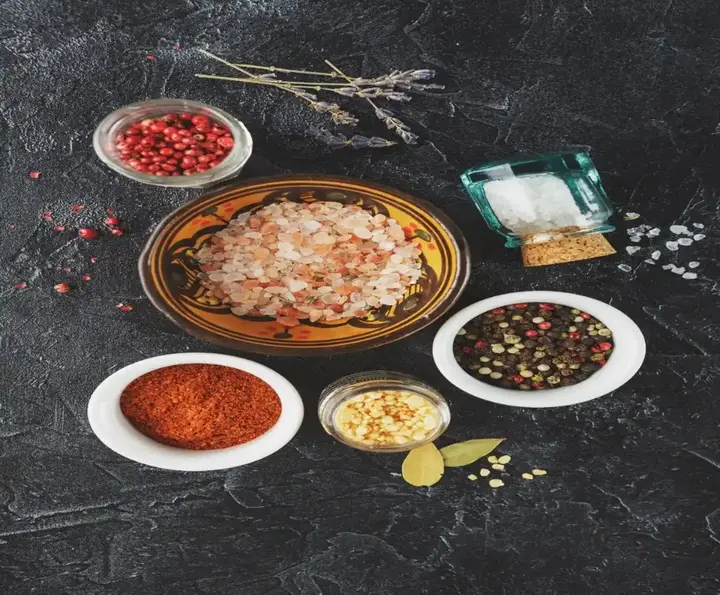Have you heard about Himalayan salt and its various benefits?
Recently, many diets have tended to encourage the use of Himalayan salt instead of regular salt, and many people interested in providing skincare tips encourage the use of Himalayan salt in the shower. But not many of us know with it is Himalayan salt and what is the reason for its pink color. Is Himalayan salt really healthy? Does it have benefits for the body and skin? Accompany us in the lines of this article to learn together about the identity of Himalayan salt and its benefits that we may not know.
What is Himalayan salt?

98% of Himalayan salt is sodium chloride compounds and the rest are rare minerals that are responsible for its pink color. Those minerals are magnesium, calcium, potassium, zinc and iron, while ordinary salt consists only of sodium and chlorine. Himalayan salt has a pink color and a coarse texture unlike regular salt with a white color and soft texture. Himalayan salt is extracted from rocks and classified as a type of sea salts. Himalayan salt is extracted from one of the world's oldest salt mines in Pakistan next to the Himalayas and exported to the whole world. Don't be fooled into using more of it in your diet because it contains the same sodium as regular salt and may cause high blood pressure if you overuse it as regular salt.
Recommend
Himalayan salt and bathing

Many recommend using Himalayan salt in the shower, you must be wondering why? In fact, the benefits of Himalayan salt in bathing have not been scientifically proven, but those who have tested it have shared their many experiences. Users noticed that it soothes insect bites, by sleeping in water mixed with Himalayan salt Users noticed calming the feeling of itching caused by insect bites such as mosquitoes, bees and fleas, and it also works to soothe swelling and rashes.
Users of Himalayan salt by bathing in it mixed with warm water noticed that it helps to relax and reduce the feeling of fatigue and stress after a hard day's work, and even confirmed that bathing in it for ten minutes enhanced their sense of satisfaction and emotional health. Some people interested in traditional therapies or so-called alternative medicine see Himalayan salt as having the ability to generate negative ions in the air around you that help you relax and have even likened this sensation to the sensation of sleeping on the seashore relaxed.
You need to wash your body with water first and then add a cup of Himalayan salt to the bathtub filled with water and sleep in it for between 10 minutes and up to 30 minutes at most. This bath can be repeated more than once a week. Moisturizing the skin with moisturizers after this bath increases skin hydration and promotes relaxation.
You should know that sensitive skin is negatively affected by Himalayan salt, so if you try bathing with Himalayan salt and feel itchy, it is preferable to rinse the body quickly with lukewarm water and consult a specialist if symptoms persist.
Himalayan salt and skin freshness

Sleeping in warm water and Himalayan salt helps your body absorb iron from salt and is an effective contributor to skin cell regeneration. Your body's cells also absorb some of the other elements of Himalayan salt that help reduce acne and scarring, increase skin smoothness and hydration. It is a complete skin routine of only two ingredients.
Himalayan salt and muscle pain relief

Himalayan salt balances water and electricity in the body which helps deliver electrical impulses to your body to take care of muscle contractions and deliver the required nerve impulses to other cells in your body. Magnesium in Himalayan salt also promotes muscle health and stimulates your body's absorption of calcium, which is important for building and strengthening muscle. Potassium in Himalayan salt also helps your body's muscles do their job.
Himalayan salt and detox

The electric charge of Himalayan salt and minerals travels into the water, exhaling toxins from healthy cells, into the bloodstream and then out of the body. This helps to rejuvenate the cells of your body and rid you of harmful toxins. Some also make so-called salt lamps that are believed to purify the air around you of toxins.
Himalayan salt and cooking

Processing Himalayan salt before using it in cooking reduces the value of minerals so it is not much different from regular table salt if it is processed. So what's the use of using it when preparing food? The salinity of Himalayan salt tastes stronger, so you usually use less when salting food with Himalayan salt, thus, reducing the level of sodium in your food is one of the advantages. Himalayan salt promotes the secretion of enzymes that help you in digestion, especially the digestion of proteins.
Himalayan salt is recommended when cooking chicken, salmon, beef, lamb and seafood but after heating it. It is also used in sauces and marinades. Do not forget to use it in moderation as mentioned because it has a saltier taste than regular salt and is nutritionally close to it. Remember that you will need iodine if you always use Himalayan salt as a substitute for regular salt and you can get it from other alternatives such as seafood and eggs.
Some advise those interested in losing weight to mix a teaspoon of it with a glass of water daily in the morning and drink it, thinking that it promotes weight loss. The minerals in Himalayan salt help the body lose weight naturally.








